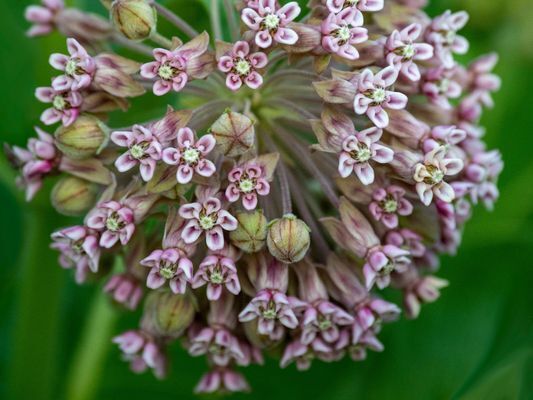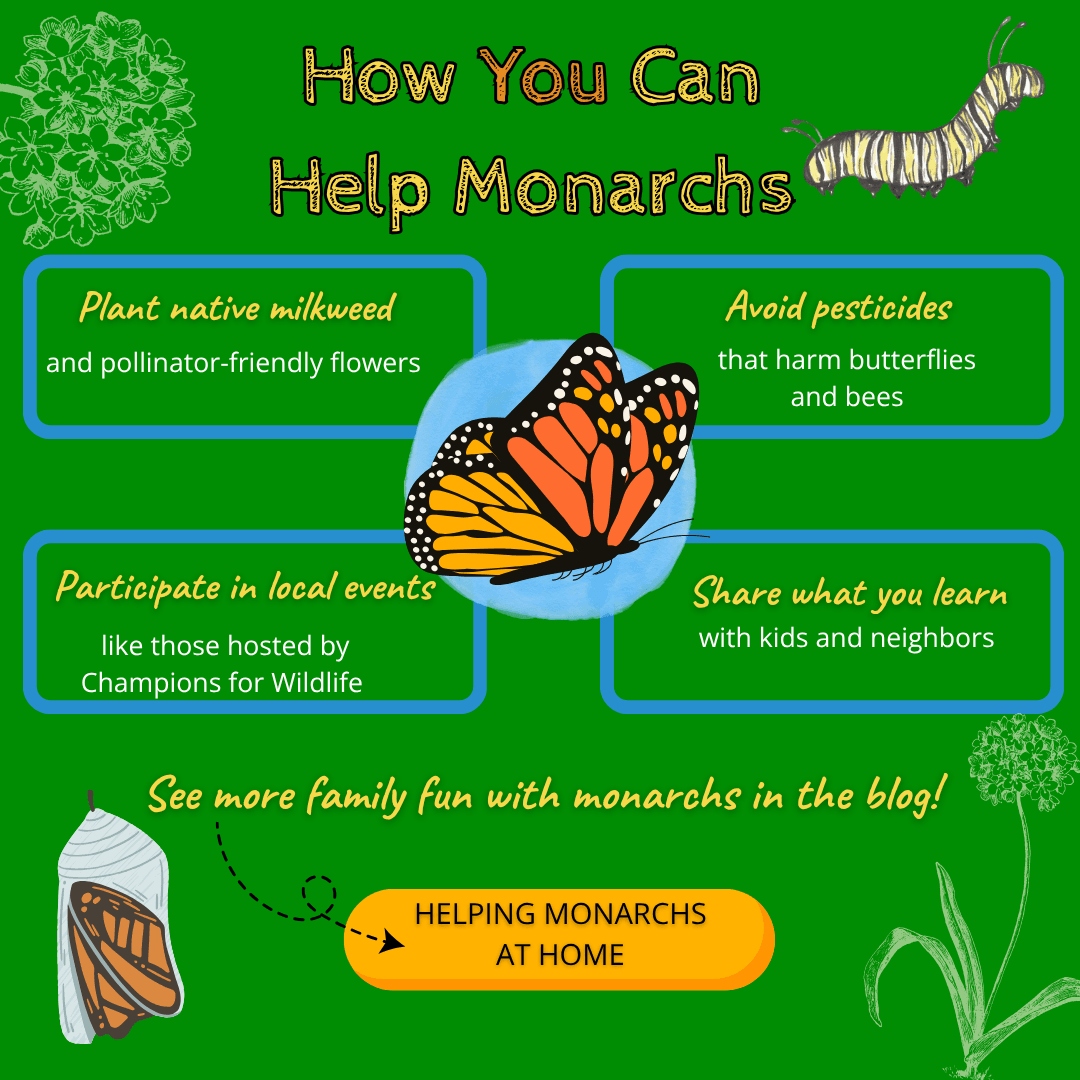When Sterling attended a Champions for Wildlife event in Western North Carolina, she expected an interesting afternoon…but she didn’t expect it to flutter home with her!
The program focused on the monarch butterfly, its fascinating life cycle, and the important role that native plants play in helping these iconic pollinators survive.

Milkweek is crucial to the monarch's life cycle.
“I especially loved learning about the monarch’s incredible migration journey,” Sterling said. “And I had no idea that some types of milkweed, like tropical varieties from Mexico, can actually do more harm than good in North Carolina gardens. It was such a great reminder that small details matter when it comes to helping wildlife.”
Learning About Monarch Butterfly Conservation
That afternoon sparked curiosity that followed Sterling home. She shared everything she had learned about monarch butterfly conservation with her children: their journey, the threats they face, and why planting the right kind of milkweed matters.
When she showed them a simple card that read, “Endangered,” her kids immediately asked:
“How many monarch butterflies are left?”
Together, they searched online and discovered sobering news. The western monarch population had dropped to a nearly 30-year low in 2024, with only about 9,100 butterflies counted. The eastern population had also fallen by nearly 59% the previous winter (though there was a glimmer of hope in 2025, as more butterflies were observed overwintering in Mexico).
“That part really made us stop and think,” Sterling said. “But it also gave us hope that things can improve when people pay attention and take action.”
The Importance of Native Milkweed in North Carolina
As Sterling learned, native milkweed is essential to monarch butterfly survival. It’s the only plant where monarchs lay their eggs, and the only food source for their caterpillars.
But not all milkweed is created equal. In North Carolina, native species like butterfly weed (Asclepias tuberosa) and swamp milkweed (Asclepias incarnata) support healthy migrations, while tropical milkweed can confuse monarchs by blooming too late and disrupting their natural patterns.
By choosing the right plants, homeowners can help restore monarch butterfly populations and create safer habitats for other pollinators as well.

Avoid planting non-native milkweed species, as this could confuse the monarchs!
A Small Step Toward a Big Change
Inspired by what they learned, Sterling and her family decided to do something small but meaningful: plant native milkweed in their own backyard.
It quickly became more than just a gardening project and grew into a joyful family tradition. They watched pollinators visit, spotted the occasional monarch drifting through, and felt connected to something much larger.
“Sometimes learning about nature’s challenges can feel overwhelming,” Sterling reflected. “But it can also be a beautiful invitation to notice, to care, and to help.”

Tiny actions that mean the world to these mighty butterflies!
If Sterling’s story inspires you, there are simple ways to take action at home!
Each small effort helps build a brighter future for monarchs, and for all wildlife that depends on healthy habitats.

